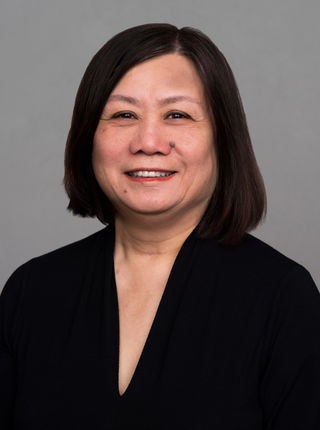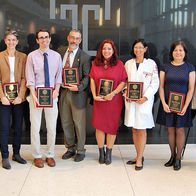Marion Chan, PhD
Associate Professor, Biomedical Education & Data Science
Associate Professor, Microbiology, Immunology & Inflammation

- Contact Information
-
- About Me
-
Research Interests
Dr. Marion Chan’s laboratory is interested in understanding mechanisms that resolve inflammation. She and her team have developed two model systems in mice which, in combination, allows study of these mechanism at the cellular and the whole organism levels. This work has implications for a wide spectrum of disease states, which is now thought to involve a chronic neuroinflammatory response.
Chan’s laboratory was the first to show that there is an active mechanism of resolution underlying remission and relapse in murine collagen-induced arthritis (CIA), a well-accepted model of rheumatoid arthritis in humans. Her findings indicated that COX inhibitors will interfere with the resolution process, resulting in chronic inflammation. (This is a critical issue because COX-2 inhibitors are widely used for treating many inflammatory diseases.) Her current work centers on elucidating the details of this mechanism. The immediate focus is on the eicosanoids synthesized from arachidonic acid through the COX and lipoxygenase (LOX) pathways. Many of these bioactive lipids are ligands for peroxisome proliferator-activated receptor (PPAR), a group of nuclear factors that serve as targets for diabetes, obesity, vascular disease, and other inflammatory diseases. One of the characteristics of PPARγ is that it primes monocytes to differentiate into alternatively activated M2 phenotype. This subclass of macrophages expresses scavenger receptors for apoptotic cells, produces transforming growth factor β and IL-10, and has been ascribed vital roles in the clearance of apoptotic neutrophils and wound repair. They are likely the initiators of resolution, in contrast to the classically activated macrophages (M1) that induce inflammation.
The second murine model of inflammation looks at leishmaniasis, a parasitic infection that produces inflammation and affects 12 million people worldwide. The etiological agent is a parasitic protozoan that infects the bone marrow, liver, skin, and spleen of susceptible individuals chronically. The parasite lives and replicates within macrophages. The Chan group is investigating whether the parasite harnesses resolution mechanisms to maintain the life-long infection. The hypothesis is that, upon infection, Leishmania polarizes macrophages towards the alternatively activated M2 phenotype that produce arginase, instead of the classically activated M1 macrophages that express inducible nitric oxide synthase. Consequently, arginine, the common substrate of the two enzymes, diverge from producing the parasiticidal nitric oxide. Among the dietary compounds studied in the laboratory, curcumin is a PPARγ activator and agonist. This anti-inflammatory molecule increases parasite burden in Leishmania donovani-infected mice.
- Education, Training & Credentials
-
Educational Background
- Cornell University Medical College, PhD
- Publications
-
Digital Bibliography
Selected Publications

